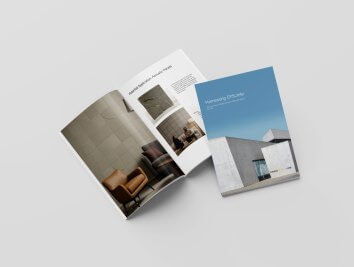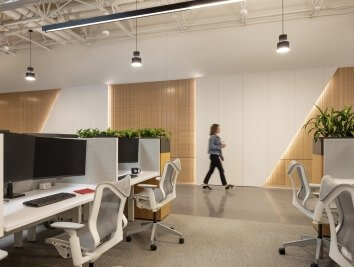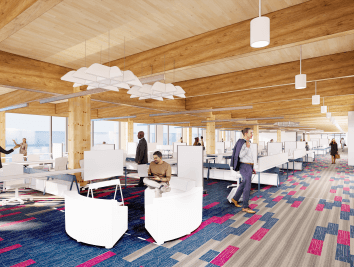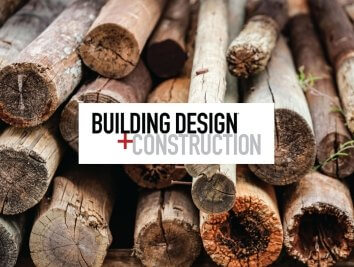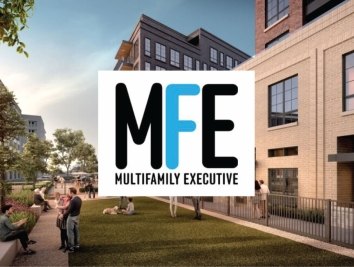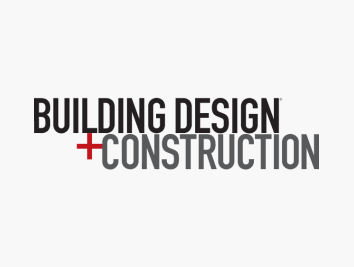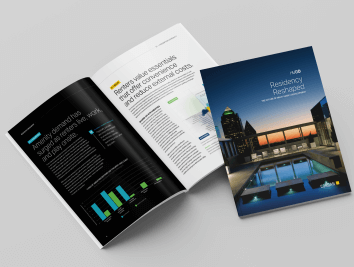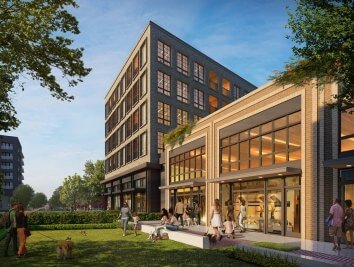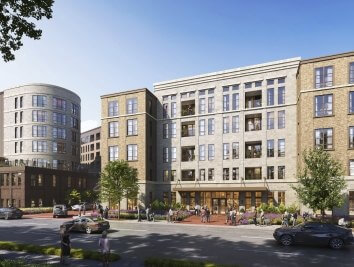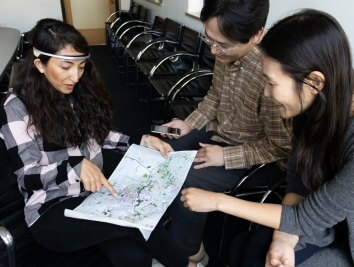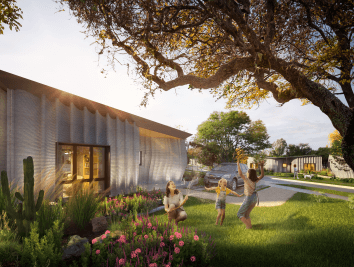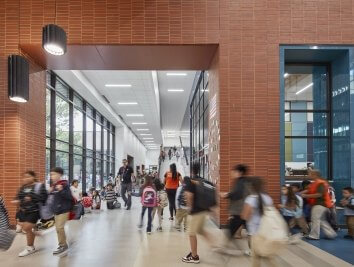Better Hospitals. Better Design: The Future of Data-driven Architecture
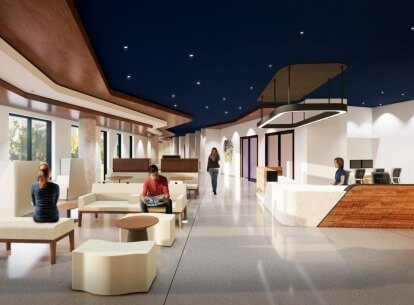
Research and data-driven design are having a moment. Healthcare has long owned the space of building solutions and physical environments that are rooted in scientific research—popularizing processes such as Evidence-Based Design to achieve the best possible outcomes for patients and staff. A range of studies that explore the impact of the physical space on patient health and well-being, staff stress and errors, resource waste and sustainability, and visitor/community comfort and engagement have evolved healthcare design to create more human-centric environments.
Our new healthcare leadership explores the changing pressures on healthcare design, the next frontier of data and design, and how recent Corgan research offers new insight that address common pain points and future challenges for a more human and empathetic experience.
Case Study
Dementia Friendly Hospitals
AJ Thomas, Principal, Healthcare Market Sector Leader
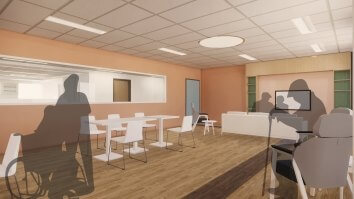
With an estimated 5.8 million Americans living with Alzheimer’s disease/related dementias and no current treatments available to stop or slow the onset or progression of these health conditions, dementia is on track to become the nation’s number one public health issue. In the next decade, Arizona will have the highest projected increase in the number of those affected (2019 Alzheimer’s Association Facts and Figures). This in turn will create even greater demand on our health care system as these individuals and their families seek care from across the continuum. With increased awareness of dementia as a major health concern, there is mounting pressure to increase the ability to provide dementia capable care by dementia capable practitioners in dementia friendly environments. The question is, are we as healthcare designers and architects prepared to meet the unique needs of these individuals and their families and what will it entail?
The built environments that we live and work in, have a major influence on our physical and psychological well-being. Nowhere is this of greater importance than a hospital and patient care setting. People visiting these facilities already face the stress of their own ailment or the stress of caring for their loved one. Design can help reduce this stress by incorporating evidence-based design principles. From wayfinding to the selection of colors and textures of the materials that we specify, these facilities can not only aid in stress reduction but also aid in the actual healing process. Until recently, little attention has been given to the specific challenges healthcare environments can present to people with cognitive problems or dementia or the ways that design can respond to and anticipate their needs.
Corgan’s healthcare team was selected as 2019 Hospice of the Valley Dementia Fellows. Our Change project for our fellowship is to establish dementia friendly guidelines and tools for the healthcare built environments. Our research is a year-long activity that looks at the challenges presented to general hospitals in providing care for people with dementia and explore the role design can play in creating a standard of recognized guidelines for existing and new facilities. We are researching design that encourages wandering, a design that minimizes over-stimulation, and a design that introduces familiar settings. Evaluating four local in-patient memory care units in the Phoenix area representing a range of diverse sites, settings and scales, we will analyze date of existing standards with similar intents such as WELL Building Standards, Dementia Friendly City Standards, and guidelines established in other countries.
The goal of our research is to draft a set of guidelines that will help facility owners, staff, providers and designers with information necessary to not only help to better assess the needs of memory care and dementia patients in relation to their physical environment (such as floor coverings and the best use of paint colors) but also come away with a better understanding of ways that the environment can be used to encourage people to positively interact and socialize.
Case Study
Intuitive Wayfinding
Shane Williams, Vice President, Healthcare Studio Design Director
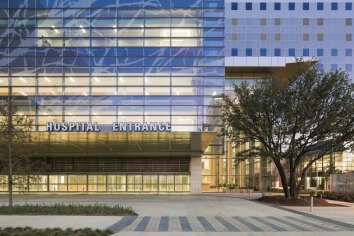
Intuitive wayfinding seeks to understand how humans perceive and understand their surroundings. It is especially critical in healthcare facilities for several factors. First time and infrequent visitors comprise much of the population using the healthcare facility. The next factor is the general age of the demographic using the facility. Most healthcare users are an aging demographic with variable levels of mobility, sight, and hearing. Add to this the stress, anxiety, and confusion with the visit, and it’s easy to understand why intuitive wayfinding is critical to a positive user experience. A hospital visit is often is full of uncertainty, stress, and anxiety. From identifying the facility and arrival to finding the entry or parking and navigating the interior, intuitive wayfinding is key to easing circulation, removing common frustrations, and reducing stress.
In partnership with our aviation practice, which is also confronted with the challenge of managing a diverse group of end users including first time visitors with a range of cognitive ability, mobility, and contextual/cultural cues, our healthcare studio combined the science mental mapping with an eye-tracking experiment to understand how people move within a space. Using eye-tracking goggles, Corgan recorded a heat map of visual fields and fixation points to analyze conscious and subconscious attention points, develop user profiles, and tailored intuitive wayfinding solutions that add confidence and efficiencies while reducing stress and confusion.
The challenges to clear, intuitive wayfinding in healthcare lie in the scale, complexity, and density of the spaces that comprise a healthcare facility. Healthcare spaces are made up of a number and variety of individual rooms grouped together by uses and often comprise several departments, functions, and specialties within a single facility. Looking beyond signage, a mix of strategies can shape the mental map of a space. From creating identities within key locations, manipulating lighting and using landmarks to provide orientation cues to well-articulated circulation paths, architectural contours, and attention at decision points with lines of sight to what’s ahead, the principles of wayfinding can help seamlessly connect a variety of patients and user groups to their next step.
Internal building organization includes the hierarchy of various circulation corridors to connect all the internal services within the facility. Clearly creating pathways for users to be able to self-navigate the facility is the purest outcome of intuitive wayfinding. Minimizing the number of decision points along the pathway, creating memorable landmarks at critical decision points, and providing positive connections with views back to the exterior spaces of the building location, all work in concert to provide an intuitive wayfinding and positive user experience.
During our research for a new Medical Home Clinic for JPS, we found the existing facility had poor directional signage, limited natural light and views, and confusing, forced wayfinding. Based on our existing conditions research as well as our cross-market sector understanding, the new model for the JPS Medical Home Clinic includes intuitive wayfinding from the site arrival sequence, to the building entry sequence, and internal intuitive wayfinding that includes constant views to the exterior for natural light and spatial orientation. With the new Parkland Hospital, the design team had the opportunity to utilize our research and evidence-based approach on an even larger scale—serving a population of over 2.5 million and growing. The resulting organization facilitates public and patient movement along natural daylit circulation spines on each of the podium levels – further reinforcing the intuitive wayfinding with exterior views and spatial orientation.
Case Study
The Future of Data and Design
Chris Grossnicklaus, Vice President, Business Development Director

Modern healthcare demands places and designs that lean into the future. The rapidly expanding insight gained from research and data is evolving how we create solutions that anticipate future demands, promote healing, and ultimately deliver on our client’s terms. Our healthcare team works with clients to understand their current state and future needs to evaluate design solutions. We use several methodologies to bring research to healthcare design from evidence-based design (EBD), patient safety metrics, and the WELL Building Standard. These approaches require architects to be more sophisticated in translating research into space that is grounded in setting objectives and measuring end results.
Big data has gained popularity in the corporate workplace—removing the guesswork from design and the impact of the space on staff wellbeing and business outcomes. Healthcare spaces have started to recognize the value of data in design, and under the Affordable Care Act, providers are now tracking large amounts of data that measure patient satisfaction, length of stay, readmissions, and staff retention, all of which affect hospital’s profitability in a pay-for-value system. Robust patient tracking systems will be more accessible highlighting key room utilization, bottlenecks in patient flow, and overcrowding. Successful healthcare architects will lead the way in designing spaces that use this information to expand how patient care will be delivered.
The integration of data and research will influence the way providers treat patients and the role buildings will play in the future. The process of healthcare design will look to this expanded knowledge to predict human behavior and begin to explore possibilities—all the what-ifs in how small and large changes can impact patient outcomes, the staff experience, and community engagement. The continued movement toward data-driven solutions and demand for inspiring, empathetic, and technically sophisticated design rooted in research and science challenges design to translate scientifically based understanding of human behaviors and perceptions into spaces that embody the future of a more human-centric healthcare experience.





